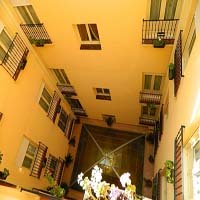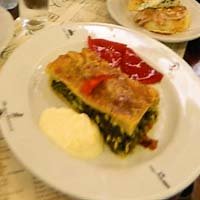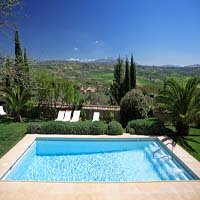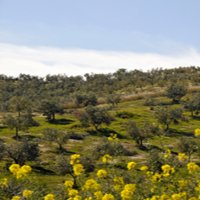Almeria Spain
Almeria Spain is located on the shores of the Mediterranean in eastern Andalusia, it is a historic city, the capital of Spain’s Almeria province and an important hub of tourism in the area. Although administration-wise Almeria Spain is clearly a part of Andalusia, its local dialect, climate and some of its history and customs (its local cuisine in particular) distinguish it from other Andalusian provinces.
Geography
Almeria Spain is the easternmost provincial capital in Andalusia. In contrast to certain other parts of the region (the Costa del Sol, for example); Almeria’s beaches are almost virginal. Nearby mountains, a unique microclimate and coastal nature preserves make Almeria, Spain a wonderful place to visit for almost anyone.
The coastline is one of the western Mediterranean’s most beautiful and ecologically rich. Several of the area’s beaches and much of its coastline, marine life, and local terrestrial flora and fauna are under the protection of Cabo de Gata-Nijar Natural Park.
The arid interior near Almeria has been used as the setting for a large number of “spaghetti westerns,” and the town and the nearby region were used as sets for the blockbuster hit Lawrence of Arabia. One film expert reports that some of the old movie sets are still there.
Climate
The coastal climate is subtropical arid, a type that isn’t found anywhere else in Spain (for that matter, you won’t find it anywhere else in Europe either). Overall, it’s one of the hottest, sunniest and driest climates on the European continent, averaging more than 320 sunny days a year and raining an average of only 26 days per year. Even during the “wettest” months (the winter) rainfall is unusual and mostly comes as a shower or quick thunderstorm. There’s no rain at all during the hottest months (between June and September). An average summer day on the coast will see 91 or 92 degrees F. That’s warm enough for most travelers, but when the Levante wind blows in from the hot interior desert, the thermometer can soar to 100 or more. Winters are mild - the average high is 64 degrees F. and it rarely drops below 46, even at night.
History
Almeria was founded by the Moors in 955 A.D., primarily to bolster their regional coastal defenses. At one time it was one of the Caliphate of Córdoba’s most important commercial and military ports. The town’s citadel (Alcazaba) was named Al-Mariya-yat (the Watchtower), and that’s almost certainly how Almeria got its name. The Almeria citadel was the second- largest fortress the Moors built in all of Spain (second only to the magnificent Alhambra) and they placed mosques and elaborate palaces within its expansive triple walls. Much of present-day Almeria stretches along the exterior walls of the Alcazaba.
After the breakup of the Caliphate of Córdoba, powerful local Moorish emirs continued to rule Almeria. A silk industry sprang up in the area during the 11th century. Almeria grew rich by exporting the silk it produced, a practice that made its port more valuable and coveted than ever. The city endured a series of sieges conducted by an assortment of competing emirs, particularly those from Valencia and Granada. In 1147 it was temporarily taken by Christian forces operating in the area during the Second Crusade. Control passed back to the Moors soon afterward, and it wasn’t until 1489 that Almeria was once again ruled by Christians – Isabella and Ferdinand, the Catholic co-monarchs of Castile.
The 16th century brought several catastrophes to Almeria, including a number of devastating earthquakes. All remaining non-Christianized Moors were expelled from the city during this period, and attacks by Berber pirates were frequent. Despite the havoc wreaked by war and natural events, Almeria regained its importance to Spain when huge iron mines were discovered in the area.
Fast-forwarding to the Spanish Civil War of the 1930s, Almeria surrendered to Nationalist forces after being shelled by the German Navy. At the time (1939), the German involvement in the war in Spain was quite disquieting in many other parts of Europe.
After World War II, Almeria began experiencing tremendous growth as a result of tourism and improved agricultural techniques. Today, the historic quarter remains quite picturesque, with narrow lanes and whitewashed buildings. The Walls of Hayrán (sometimes called Jayrán or Jairán) at the crest of San Cristobal Hill are an excellent spot from which to view the harbor as well as the city’s historic district.Culture
Like almost every other city in Spain, Almeria has its share of traditional religious festivals. The food, though, sets it apart from the rest of Spain, with local delicacies that are far different than they are in the rest of Andalusia. In Marbella, for example, you’d find plenty of fried seafood in the local cafés, along with garlic soup, gazpacho and wine donuts. In Almeria you’re much more likely to find a dish called ajo colorao, a type of stew consisting of sausages, potatoes, red bell peppers, cod, olive oil and garlic. Another typical Almerian dish is monkfish with mushrooms and leeks (rape a la barraca). Sponge cake with dates is a popular local dessert.
Attractions
Here are a few of the sights you’ll probably want to check out while you’re visiting this historic city in Spain:
- · The protected nature trails and beaches at Cabo de Gata-Nijar Natural Park.
- · The gardens, triple walls and keep of the Alcazaba.
- · The fortress-like Almeria cathedral. Originally a Moorish mosque but later converted into a Christian church, it was destroyed in a 16th-century earthquake. Rebuilt shortly thereafter, it retains some of the towers, crenellations and other defensive features of its original design.
- · The Chanca district, where homes have been carved into rock.
- · The Museum of Almeria, home of artifacts left behind by prehistoric, Iberian, Greek, Roman and Moorish occupants of the region.
- · The Renaissance-style Church of Santiago, constructed in 1533. Its portal and slender tower are decorated with reliefs.
- · Underground air raid shelters built to protect the Almerian population during the Spanish Civil War. They comprise Europe’s largest system of shelters that’s open for tourists.
Copyright© southern-spain-travel.com All Rights Reserved. Content Protected By DMCA.
Authentic Spain Food
It's true! Get tapas, jamon, olive oil, manchego and chorizo shipped directly from Spain
Get Football Tickets
Click here to buy tickets to Spains Sports events
Book a Hotel






New! Comments
Have your say about what you just read! Leave me a comment in the box below.